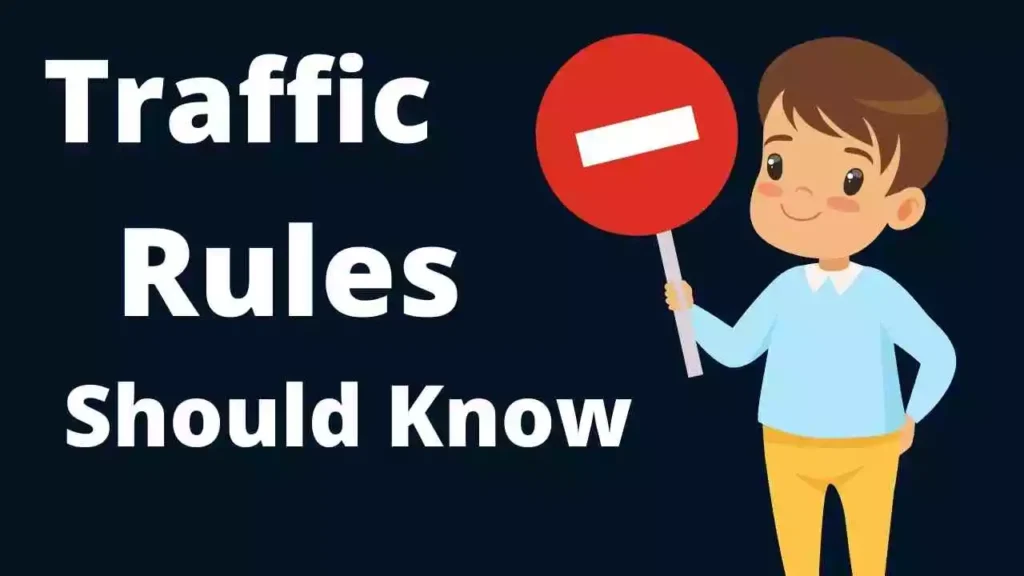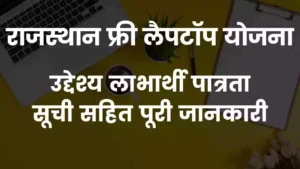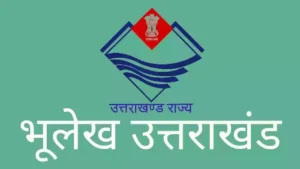It is very important for you to be aware of the traffic rules, if you do not follow these traffic rules then you can be issued a fee by the traffic police. If you don’t follow these rules you are putting yourself and others at risk. If yes, then it is better that you follow all these traffic rules, we have given you all the information about traffic rules in detail inside this article, you read this article completely.
What is the Traffic Rules
learning to drive – Anyone learning to drive a motor vehicle is required to obtain a Learner’s License. The law requires that it display a square-shaped white plate or card at the front and rear of the vehicle that must be 17″ (17 cm) x 7″ (17 cm). The letter ‘L’ should be written on this plate in red color. The height of the letters should be 4″ (10 cm) and the width should be 3.5″ (8.5 cm). He/she should have his/her Learner’s License at the time of driving. A learner’s license issued is valid for a period of six months and there is no grace period.

The learner’s license is valid only in the state where it is issued. The minimum age at which a Learner’s License can be issued is 18 years.
A CAR driver with a learner’s license for a car driver (learner’s license holder) must have a person duly licensed to drive a vehicle. He should sit next to him in such a position that he can easily stop the vehicle.
For permanent license holders
A permanent license is valid for the type of vehicle for which it is issued. After it expires, there is a grace period of 30 days to renew it. The minimum age to apply for a permanent license is 18 years. For paid drivers, it is 20 years. The paid driver must have his own driving license at the time of driving. A permanent license is valid throughout India.
Make sure before driving
Your vehicle is registered. The registration number is displayed prominently on the front and back in the prescribed manner. It is insured to cover liability in respect of any third-party risk. The vehicle is in a roadworthy condition. A vehicle that is not roadworthy is a risk to your life and that of others You are not under the influence of drugs/drugs to the extent that you are unable to control the vehicle properly. You have a valid driving license for the type of vehicle you are driving. You are physically and mentally fit to drive.
Your car is required by law
be registered. Place headlight, the backlight to illuminate the number plate. The timing of lighting starts half an hour after sunset and continues till half an hour before sunrise. Take breaks of sufficient strength. Keep tires properly inflated and in good and good condition. Keep horn in working order. Keep its steering mechanism adequately maintained and in good trim. Be equipped with an electrical or mechanical device.
Traffic police stopped?
A traffic policeman in uniform has the right to demand your driving license and inspect your vehicle documents. He can confiscate your license if necessary. If a traffic policeman gives you directions on the road, it is your duty to obey them regardless of what the electronic traffic signals say. When a traffic policeman is posted at a signal/crossing, he is the final authority. If you can’t find your vehicle, it may have been pulled over rather than stolen. Ask around, local shoppers are usually notified of local traffic stations where vehicles are confiscated.
What action can a policeman take?
He can note down the details of your license which will then be sent to the court. The court will then issue directions as to what action is to be taken – a certain amount in the form of a fine. If you admit your guilt and remit the requisite amount, the case will be registered, else you will be summoned and the case will be decided on the merits. He can revoke your drivers’ license and issue a temporary license (which only lasts for a set period of time). You can compound the offense by paying a fine at the police station in whose jurisdiction the license was confiscated. Otherwise, you will be provided with a summons from the court, if you fail to appear in the court, an arrest warrant can be issued. If the policeman is an officer of the rank of sub-inspector or above, you can compound the office by paying a fine on the spot. Relevant receipts will be provided to you.
Some important offenses:
- Not holding a valid license while driving without a license.
- Permission to drive a vehicle by a person who does not have a license.
- Driving without insurance permit/fitness
- speeding / reckless driving
- Driving under the influence of alcohol.
- lane-cutting/dangerous lane-cutting
- Running against one-way.
- Stopping at a pedestrian crossing / crossing the stop line.
- Improper use of headlights.
- Using a personal vehicle for business purposes.
- Carrying goods in a dangerous manner.
- Taxi drivers refusing to ply/charging extra / not wearing a uniform.
- Jumping traffic signal light.
Drive/Driving Tips & Rules? Tips For Drivers?
In life and on the road, the journey is as important as the destination. Observe the following guidelines while driving to ensure the safety of you and your family as also your fellow wayfarers.
- Be attentive and alert while driving. You cannot rely on your fellow drivers to follow traffic rules and keep you safe. Only if you are paying proper attention to your immediate surroundings, will you have enough reaction time to respond to any potentially dangerous situations like a child or animal suddenly darting across the road. Therefore, it is advised that you not use your mobile phone while driving. Always stop the vehicle to attend to calls. It is also helpful if you do not play loud music in your car or using headphones while riding a motorcycle.
- Wear helmet while driving a two-wheeler and seatbelt while driving a car. The vast majority of fatalities in road accidents result from head injuries, which can be easily avoided with the use of these standard safety measures. Ensure that helmets are of good quality (ISI certified) and give full coverage to the head. Also, wearing a helmet is no use if the strap of the helmet is not fastened, as the helmet will simply fly off the head in case of an accident. Ensure the pillion rider also wears the helmet. Avoid triple riding. A two-wheeler is designed to carry only two persons, and higher loads will make the vehicle unbalanced, causing accidents involving higher fatalities.
- Do not overspeed. Driving at a higher speed may save you time, but it also significantly increases the chances of an accident – and the higher the speed, the more horrific are the injuries caused. Driving at higher speeds makes it difficult to control the vehicle and also reduces the reaction time available to you to respond to the unexpected. Therefore, always try to match the speed of the rest of the traffic, without exceeding the speed limit. Keep to the left to stay out of the way of faster vehicles. If another driver seems to be in a hurry, do not be stubborn and give right of way. And if you need to go ahead of a slower vehicle in front of you, overtake from the right.
- Do not drink and drive. Alcohol severely affects our motor skills, such that one may not be in a position to even walk properly, let alone drive. Always ensure there is a designated driver in the group to drive the vehicle after a party or take public transport or taxi/auto instead. Drunken driving is a punishable offence which attracts a heavy fine, jail term and even cancellation of license.
- Slow the vehicle at zebra crossings, traffic signals and speed humps. These spots are more likely to be used by pedestrians to cross the road. Also slow the vehicle when making left/right turns or turning into a service lane and gradually join the main flow of traffic. Also drive slowly during rain and foggy weather.
- Follow lane discipline. Do not haphazardly swerve left and right in traffic as sudden vehicle movements and wrong overtaking can lead to accidents.
- Do not jump traffic signals. Oncoming traffic from the other direction can lead to a high risk of accident.
- Do not use headlights on high beam on roads where there is oncoming traffic as it blinds the drivers on the other side.
- Keep the vehicle in good condition to avoid the risk and inconvenience of sudden breakdowns. Get emission test done regularly to help reduce air pollution.
- Do not use horn unnecessarily as it causes disturbance to other drivers and contributes to noise pollution.
- Do not decorate your vehicle with garlands and buntings as it limits your field of vision through the windscreen and distracts other drivers.
- Always carry your vehicle documents in original in your vehicle – driving license, registration certificate, emission certificate, insurance certificate and taxation certificate. Transport vehicle owners should additionally keep their fitness certificate and permit. You may be asked to produce these documents at any time by the police and non-production may lead to detention of vehicle.
- Do not park in “no parking” areas as it causes obstruction, leading to slow movement of traffic and inconvenience to pedestrians. When parking next to a pavement, do not park more than 15 cm away from the side wall.
Spot Fines
| Sl.No. | TRAFFIC OFFENCES | SECTION OF LAW | FINE AMOUNT (Rs.) |
| 01 | Dangerous Drive Two Wheeler | M.V.Act 184 | 300 |
| 02 | Dangerous Drive Non-Transport Vehicle(White Board) | M.V.Act 184 | 400 |
| 03 | Dangerous Drive Transport Vehicle (Yellow Board) | M.V.Act 184 | 500 |
| 04 | Whoever drives a Vehicle or cause Vehicle to be driven at a speed exceeding the maximum speed fixed | Section 112 read with sec.183(1) & (2) of M.V. Act | 300 |
| 05 | Racing & trails of speed | Section.189 of M.V. Act | 500 |
| 06 | Carrying excess passengers in i) 3 Wheeled Vehicle ii) Transport Vehicles including buses | Section 177 of the M.V. Act | 100/- for every excess passenger |
| 07 | Drunken Drive | M.V.Act 185 | Court Fine |
| 08 | Section 177 of M.V. Act | Section 177 of the M.V. Act | 100 |
| 09 | Demanding Excess Fare & refusal to come for hire etc., by Autoricksaw Driver or Taxi Driver | Rule 13 (U) of the KMV Rules read with Section 177 of the M.V. Act | First time 100/-, 2nd & subsequent offences 300/- |
| 10 | Defective Fare Meter | 16 Clause (K) KMV Rules 1989 | 100 |
| 11 | Defective Silencer | 16 Clause 120 KMV Rules 1989 | 100 |
| 12 | Emitting Black Somke | 190 Clause (2) IMV Act | 300 |
| 13 | Shrill Horn | 190 Clause (2) IMV Act | 100 |
| 14 | Using vehicle Without Permit (For commercial vehicales) | 192(1) MV Act | Court Fine |
| 15 | Without Driving License Two Wheeler | Sec.3 read with Sec.181 of the M.V. Act. | 300 |
| 16 | Without Driving License Non-Transport Vehicle | Sec.3 read with Sec.181 of the M.V. Act. | 400 |
| 17 | Without Driving License Transport Vehicle | Sec.3 read with Sec.181 of the M.V. Act. | 500 |
| 18 | Driving a Motor Vehicle in any public place by an under-aged person | Sec.4 read with Sec.181 of the M.V. Act. | 500 |
| 19 | Owner of a Motor Vehicle permitted any person to drive his/her vehicle in contravention of section 3 or 4 | Sec.5 read with Sec.180 of the M.V. Act. | 1000 |
| 20 | Jumping Traffic Signal | Sec 119 / 177, M.V. Act | 100 |
| 21 | Wrong Parking | Sec 122 / 177 of MV Act | 100 |
| 22 | Cutting Yellow Lane/Lane Discipline | 18(II) RRR /119/117 MV Act | 100 |
| 23 | Defective Number Plate | 50 / 177 MV Act | 100 |
| 24 | No Entry | 19 / 177 IMV Act | 100 |
| 25 | H.T.V.Prohibited | Sec 115 R/w 177 IMV Act | 100 |
| 26 | Without Uniform | Sec 14 R/w 177 IMV Act | 100 |
| 27 | Without I.C | Sec 14 R/w 106 IMV Act | 500 |
| 28 | Without F.C | Sec 14 R/w 56 IMV Act | Court Fine |
| 29 | Defective Head Light | Sec 14 R/w 106 IMV Act | 100 |
| 30 | Without Tail Light | Sec 14 R/w 250 IMV Act | 100 |
| 31 | Driving any Motor Vehicle without number plate | Rule 50 of the Central Motor Vehicle Rules read with section 177 of the M.V. Act | First time 100/-, 2nd & subsequent offences 300/- |
| 32 | Footboard Traveling | 94 Clause (2) IMV Act | 100 |
| 33 | Gents Traveling Ladies Seat in BMTC Bus | 94 Clause (4) IMV Act | 100 |
| 34 | Holding / using Mobile Phone while Driving / riding a Vehicle | Section 230 (A) KMVR R/W Sec 177, I.M.V Act | 100 |
| 35 | Not wearing Helmet to head while riding the Vehicle | 230 of the KMVR 1989 in sub rule (1) | 100 |
| 36 | Triple riding | Section 128 (1), MV Act R/W sec 177 MV Act | 100 |
| 37 | Wrong Parking + Towing charges(2Wheeler) | Section 15(2) MV Act R/W Sec 177 MV Act | 750 |
| 38 | Wrong Parking + Towing charges (Car) | Section 15 (2), MV Act R/W sec 177 MV Act | 1100 |
| 39 | Wrong Parking + Towing charges (HGV) | – | 500 |
| 40 | Driving without wearing Seat Belt | SEC 15(2),R/W SEC177 MV ACT | 100 |
| 41 | Using Black Film/Other Materials | SEC 100 CMVR R/W 177, MV ACT | First time 100/-, 2nd & subsequent offenses 300/- |
Conclusion.
If you like the information about traffic rules and driving rules given by us, then definitely tell your opinion in the comment box, we will wait for your questions, you must share this information on social media like Facebook, WhatsApp, Twitter, Instagram, etc.


